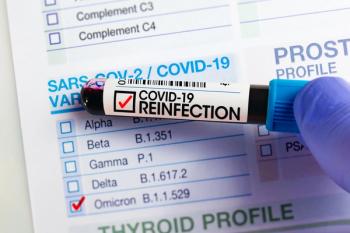
Comparing Semaglutide Versus Dulaglutide
Both semaglutide and dulaglutide are dosed once weekly for treatment of type 2 diabetes.
Both semaglutide and dulaglutide are in a glucagon-like peptide 1 (GLP-1) receptor agonist class of medications used in treatment of type 2 diabetes. GLP-1 receptor agonists reduce blood glucose by stimulating insulin secretion and reducing glucagon secretion, both occurring in a glucose dependent manner.1,2 This property provides a lower risk of hypoglycemia. These types of medications also delay gastric emptying in the early postprandial phase thus resulting lower blood glucose levels. A secondary outcome of delay gastric emptying may also result in reduction in body weight.
Semaglutide and Dulaglutide both have contraindication of a personal or familial history of medullary thyroid carcinoma (MTC) or patients with multiple endocrine neoplasia syndrome type 2 (MEN 2).1,2 Incidence of thyroid C-cell tumors occurred in animal studies, though currently it is unknown whether MTC have occurred in humans. European Union prescribing information for GLP-1 receptor agonists does not include contraindication of personal or family history of MTC or MEN 2.3
When looking at warnings and precautions of semaglutide and dulaglutide, 1 difference is noted in labeling: dulaglutide does not include precaution of retinopathy. Incidence of diabetic retinopathy was reported in SUSTAIN 6 trial, which was a cardiovascular outcomes trial for semaglutide. Semaglutide was associated with increased risk of diabetic retinopathy vs placebo.4 The lack of diabetic retinopathy in labeling for dulaglutide may be due to studies not including the safety outcome or listed as exclusion in criteria.
Both semaglutide and dulaglutide are dosed once weekly for treatment of type 2 diabetes. The recommended dose of dulaglutide is 0.75mg weekly and may be increased up to 1.5mg weekly.2 Semaglutide is dosed 0.25mg weekly for 4 weeks. The 0.25mg weekly dose is considered an initiation dose and not effective for appropriate glycemic control.1 Semaglutide should be increased to 0.5mg weekly after initiation is finished. If additional glucose control is warranted, semaglutide can be increased to 1mg weekly after 4 weeks of 0.5mg weekly.
Hemoglobin A1c (HbA1c) reduction for both medications were similar. Comparison trial SUSTAIN 7 investigated semaglutide vs dulaglutide. Semaglutide had a higher HbA1c reduction in comparison to dulaglutide (-1.4 vs -1.1 respectively, p=0.002) with comparing dulaglutide 0.75mg and semaglutide 0.5mg.5 A higher percentage of patients were able to achieve hba1c <7% at week 40 with semaglutide 0.5mg (65% vs 51%, p=<0.0001).5
Semaglutide and dulaglutide have similar efficacy results. A difference is noted when considering precautions. The difference of diabetic retinopathy listed for semaglutide and not listed for dulaglutide may impact clinical decision making when prescribing medications. Though a patient history including retinopathy does not exclude a patient from using semaglutide. Patients with history of diabetic retinopathy should be monitored for progression of diabetic retinopathy with the use of semaglutide.
REFERENCES
- National Library of Medicine. Semaglutide. Drug Label Information. DailyMed. https://dailymed.nlm.nih.gov/dailymed/drugInfo.cfm?setid=adec4fd2-6858-4c99-91d4-531f5f2a2d79 Updated January 16, 2020. Accessed February 6, 2020.
- National Library of Medicine. Dulaglutide. Drug Label Information. DailyMed. https://dailymed.nlm.nih.gov/dailymed/drugInfo.cfm?setid=463050bd-2b1c-40f5-b3c3-0a04bb433309 Updated September 26, 2019. Accessed February 6, 2020
- Romera, I., Cebrián-Cuenca, A., Álvarez-Guisasola, F. et al. A Review of Practical Issues on the Use of Glucagon-Like Peptide-1 Receptor Agonists for the Management of Type 2 Diabetes. Diabetes Ther 10, 5—19 (2019) doi:10.1007/s13300-018-0535-9
- Vilsboll T, Bain SC, Leiter LA et al. Semaglutide, reduction in glycated haemoglobin and the risk of diabetic retinopathy. Diabetes Obes Metab. 2018 Apr;20(4):889-897. doi: 10.1111/dom.13172
- Novo Nordisk. Ozempic vs Trulicity SUSTAIN7. Ozempic website. https://www.ozempicpro.com/clinical-data/ozempic-vs-trulicity.html Reviewed January 2020. Accessed February 6, 2020
Newsletter
Stay informed on drug updates, treatment guidelines, and pharmacy practice trends—subscribe to Pharmacy Times for weekly clinical insights.


















































































































































































































